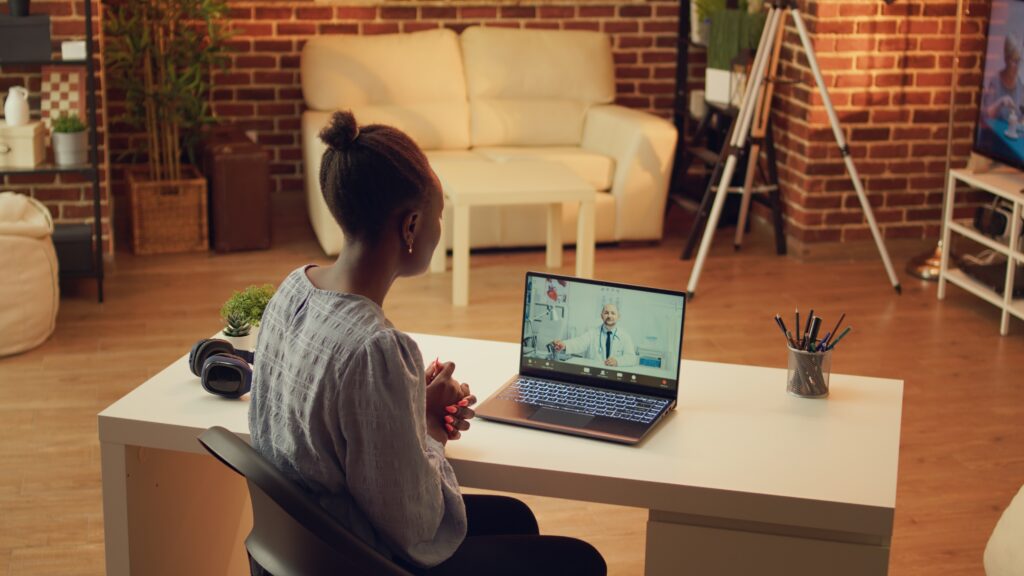Before Covid-19, telehealth was present, but its progress was moving slowly as not many people were taking advantage of it. Following the many stay-at-home orders during the pandemic, healthcare was forced to turn to telehealth as its main platform of care. Telehealth quickly shifted from a previously slow adoption rate to a record speed of uptake. With this uptake, attention was brought to the healthcare industry and the gaps in access to quality care.
Understanding Healthcare Accessibility
The issue of healthcare affordability and accessibility does not have one simple solution. The outbreak of COVID-19 has shed light on the gaps in access to quality care in the United States. Issues such as large populations of underinsured or uninsured people, primary and specialty care shortages (especially in rural areas), hospital closures, and the disproportionate impact of chronic disease on minority ethnic and racial populations have all been magnified by the outbreak.3

For millions of Americans, one or more of these things prevents them from receiving adequate healthcare. For those in rural communities, their hospital is often their only source of healthcare. Some individuals find the cost of healthcare to be too high, while others face scheduling conflicts that prevent their access to necessary healthcare providers. Additionally, there are those who don’t have reliable transportation, which limits their access to the care they require.
Telehealth: A Solution
Telehealth offers itself as a step towards progress, working to solve these critical challenges in healthcare accessibility. By using digital technology, telehealth services can deliver healthcare directly into patients’ homes, no matter their location. This helps overcome the geographical barriers encountered by patients in remote or rural communities, enabling them to access medical advice and care conveniently, without the need for extensive travel.
In terms of affordability, telehealth can lower healthcare costs by reducing the need for in-person visits, as well as the similar costs of transportation and time off work. For those with scheduling conflicts or transportation issues, telehealth provides flexibility, allowing patients to meet with healthcare professionals at convenient times. In this way, telehealth has the potential to significantly bridge the healthcare accessibility gap, offering a more accessible system for all.

Limitations and Challenges of Telehealth
As promising as telehealth seems, it does not come without drawbacks and limitations. There are various reasons why telehealth would not work for some patients.
1. Limited Access to Internet/Devices
The assumption that in 2023 everyone has access to the internet or owns a computer is an easy one to make, but it is not always true. Many people do not have access to technology or the internet. Without the necessary technology, accessing telehealth care is near impossible. There are ways that providers can accommodate this limitation such as,
-
-
- Providing an option to conduct the visit over phone (landline) when possible.
- If your telehealth platform offers security features, consider telling patients about the availability of free local hotspots (libraries or community centers), before their visit.
-
2. Patients with Limited English Proficiency
As healthcare provider shortages continue to pose a challenge, patients with limited English language skills (LEP) face an even greater difficulty in finding a provider they can communicate effectively and confidently with. While some practices will offer oral interpretation or written translation services, this is a great barrier when it comes to telehealth.
3. Older Patients and Those with Low Digital Literacy
When considering elderly patients, telehealth presents a way to alleviate the burden of traveling to and from doctor’s appointments, but it is not a flawless solution. Elderly patients who live alone may encounter difficulties accessing telehealth services due to factors such as hearing and/or vision challenges, limited technological skills, or cognitive impairment. To address this challenge, it is important to make telehealth services accessible to disabled individuals. However, this alone may not be sufficient. While guiding patients through the process of accessing telehealth services over the phone can be considered, it can be time-consuming and may not provide a long-term solution for future appointments.
Despite the challenges associated with telehealth, it remains an amazing tool with the potential to revolutionize healthcare accessibility. For many, it has already broken-down barriers, providing quality healthcare to those who may have previously struggled to obtain it. Outreach programs focusing on digital literacy, language services, and providing resources for technology access are promising options for tackling the current telehealth challenges. As we navigate the digital age, we can look forward to the creation of more user-friendly telehealth platforms, making these services even more accessible.